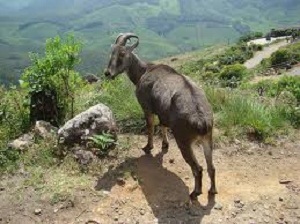Hemis National Park is located in Ladakh Region, Jammu and Kashmir, India. In South Asia this is the largest national park. Area covered by this park is 4400 Sq.kms.
What to see at Hemis National Park: This is the home place to 73 birds and 16 species of mammals. Hemis protects the endangered animals such as red fox, Eurasian brown, Tibetan Wolf, Asiatic ibex, Leopards. Small mammals can also be seen here such as Himalayan mouse hare, mountain weasel, Himalayan Marmot.
This is the best place for bird watchers also. Major attractions of this place are Fire Fronted Serin, Himalayan Snowcock, Red Billed Chough; Fork tailed Swift, Chukar, Snowfinch, Streaked Rose finch, Leaf Warbler, Robin Accentor, and Brown Accentor. Visitors can enjoy pollution free environment. Within the confines of this park, 6 villages exist. These villages were Chilling, Urutse, Shingo, Sku, Kaya, Rumbak. Within the park, visitors can see several chortens and gompas.
One of the notable monasteries is Hemis Monastery. Trekking and camping activities takes place in this park. Park boundaries are Zanskar River and Indus River. Scenic beauty of this park also attracts several visitors.
What to see around Hemis National Park:
Leh Palace: In 17th century this was acted as royal residence. Victory on the top of the Namgyal hill is another attraction. This tower was built as a mark of victory over Ballti Kashmir armies.
Nubra Valley: It is high altitude desert which is well known for its beauty. This valley separates Karakoram and Ladakh.
Shanti Stupa: It has white domed monument with backdrop of brown mountains.
Stok: This is famous for its Buddhist Monastery. It also acts as gateway for several trekking activities. This is located 14kms away from Leh.
Magnetic Hill: Due to magnetic force of the hill cars will be pulled upwards. It is 27kms away from Leh.
Mangyu Monastery: Major attractions of this monastery are paintings of mandalas, and rare thangkas.
Rizong Monastery: It looks like fortress. This gompa belongs to Gelukpa order of Buddhism.
War Museum: Other name is wall of fame. This museum showcases the war effort and Sacrifice of the Indian Army in its war against Pakistan.
Sankar Gompa: This place is famous for the statue of Avalokiteshwara Padmahari or Chenresig. This statue has thousands of heads and arms.
Zanskar River: Area of this river converted into U shape due to the glaciers. It originates at the north slope of the Great Himalayas.
Zanskar Valley: This valley is famous for flora. Other attractions of this valley are meadows, streams, Drang Drung Glacier. Trekking conducts here.
Penzella Pass: In the Zanskar Range, it is one of the important grounds. This separates suru valley from Zanskar. Along with suru Valley this also separates the Zanskar from other parts of the Ladakh. Commonly seen animals of this place are Marmots and brown Bears.
Getting to Hemis National Park: Only way to reach this place is through road way. Before reaching this place one has to reach Leh. This place can be reached either from Srinagar or from Manali. Both routes are mountain routes. Sometimes these routes will be blocked due to landslides. From Leh, Jeeps and Taxis are available to reach this park. Bus services to this gompa are very limited. Nearest railway station is located at Kalka. Nearest airport is located at Leh.
Getting around Hemis National Park: Park can be explored through jeeps and trekking. From Leh, visitors can see the surrounding places of this gompa via buses and taxis.
Best time to visit Hemis National Park: Best time to visit Hemis National Park is between May to November.
Where to stay in Hemis National Park: Accommodations are not available at this park. Villages of this park offer home stays. Hemis Gompa offer few rooms to stay.
Where to eat in Hemis National Park: Limited eating options. Local provide food. It is advisable to carry food.
